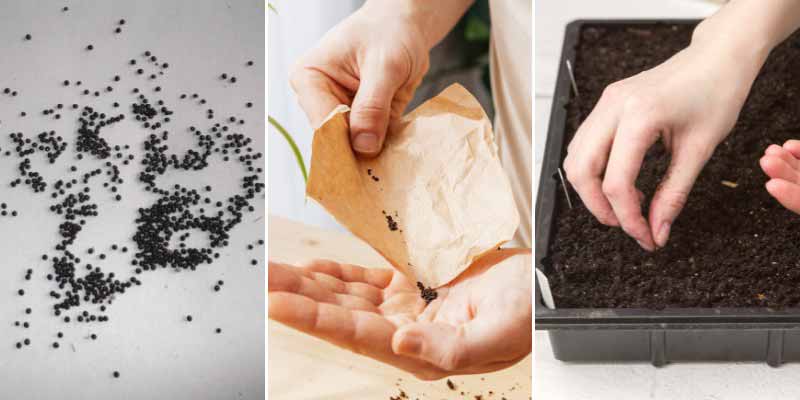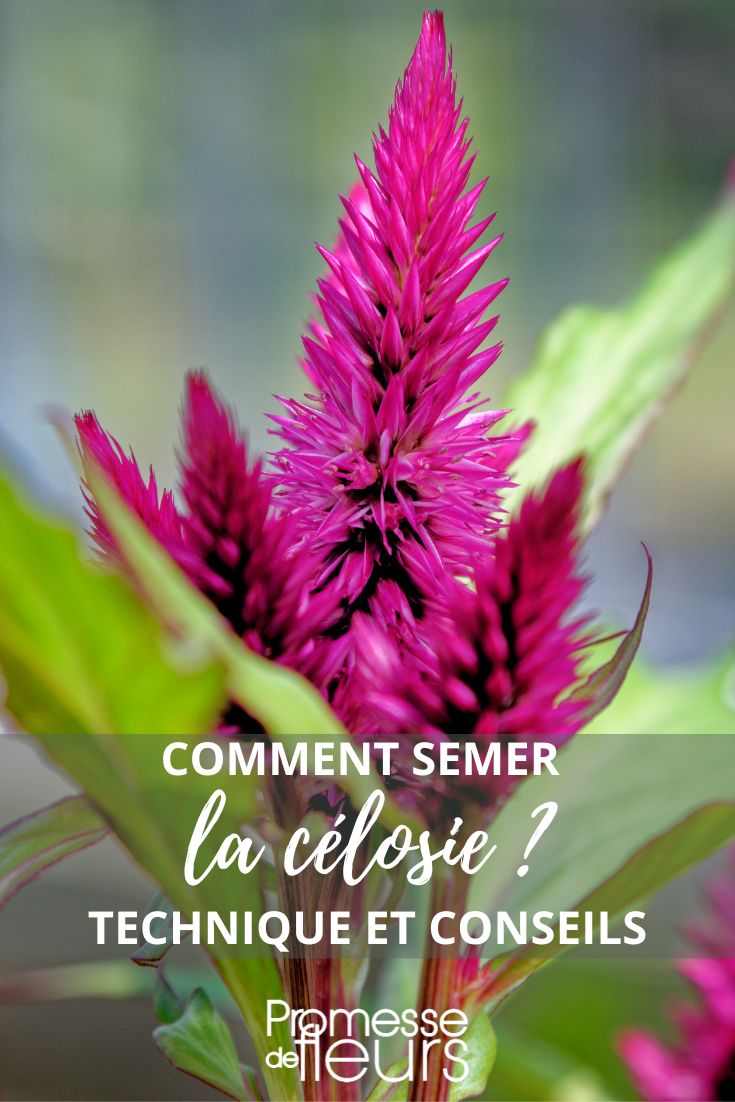Celosia, with its bright colours and unusual shapes, is an ornamental plant that adds an exotic touch to any garden. It typically flowers from June to September or October, producing inflorescences in feathery spikes or cockscomb crests, in shades of bright pink, red, purple, orange, yellow... It is a perennial but is grown as an annual in our climate because it is frost-tender. With its luminous, particularly vivid colours, it immediately catches the eye and is ideal for enlivening beds in summer. It pairs beautifully with yarrow, rudbeckias, gaillardias and cosmos. Discover all our tips to succeed in Celosia sowing, and thus obtain many young plants at lower cost!
How to harvest Celosia seeds?
To multiply Celosia, you can collect seeds in late summer from plants that have flowered. Cut the spikes and dry them by placing them on newspaper or on cloth. Once dry, shake them to release the seeds. Then store them in a kraft paper bag. Celosia seeds are small, black and shiny. Be aware, however, that most cultivated Celosias are hybrid varieties (unlike botanical species, for example Celosia spicata), so resulting young plants may differ from the originals.
In warm climates, Celosias can even self-seed.
You can also buy Celosia seeds: for example, a mix of Celosias with feathery spikes or cockscomb varieties.
When to sow Celosia?
Sowing is done under cover from late February or early March. Sowing outdoors would result in flowering too late.
How to proceed?

- Fill pots or seed trays with finely sieved compost. Ideally use seed compost that is light and free-draining. Firm lightly and water to moisten.
- Place 2 to 3 Celosia seeds per pot. If sowing in a tray, scatter them evenly over surface of compost.
- Cover seeds with a thin layer of sieved compost. They should be sown to a depth of about 0.5 cm.
- Remember to label your sowings.
- Place pots in a mini greenhouse. If you don't have one, simply cover with plastic film, or place them in a clear plastic box with a lid. This helps maintain a humid atmosphere favourable to germination.
- Then place them in a bright spot out of direct sunlight. Ideal temperature is 18 to 20 °C. Remember to ventilate the mini greenhouse regularly to prevent fungal development.
- Keep compost lightly moist but not waterlogged.
- Celosia seeds usually germinate in 10 to 15 days. Once seedlings have emerged, you can reduce watering slightly and remove young plants from the mini greenhouse.
- Once seedlings have four true leaves, pinch them to encourage branching.
- You can then transplant them into larger pots or directly into garden once risk of frost has passed, spacing plants 20 to 30 cm apart. Choose a sunny position in free-draining, fertile soil that stays cool in summer. Add some compost to planting hole.
- Water generously.

Required equipment
- Celosia seeds
- Pots or seed trays
- Seed compost
- Watering can with rose
- A sieve
- A mini greenhouse, plastic film or a clear plastic box with lid
- Labels
































Comments